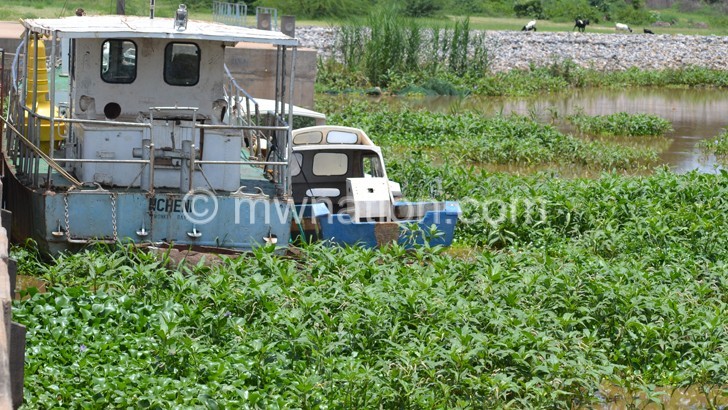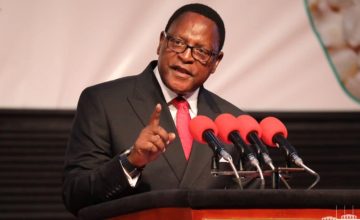Government adamant on Shire-Zambezi Waterway Project
Secrecy and suspicion have embroiled the status of the much-touted Shire-Zambezi Waterway Project with Mozambique and Malawian officials giving contradicting statements on the future of the project.
Meanwhile, some members of Parliament (MPs) have raised eyebrows following government’s decision to keep allocating funds to the initiative despite a study indicating that the waterway is “not commercially navigable in its natural state”.
According to a Reuters report, the Mozambique government has since withdrawn from a memorandum of understanding (MoU) with Malawi and neighbouring Zambia on the project and reiterated its position on Thursday last week at a press briefing in that country.

The publication quotes a senior Zambian Transport Ministry official Jafar Ruby as having said that the project was “neither viable nor sustainable in the short, medium and long-term”.
However, Minister of Transport Jappie Mhango insisted that the project is “viable”. He also expressed ignorance on the alleged withdrawal of Mozambique from the talks.
In a telephone interview yesterday, Mhango said as far as he knows, Maputo has not officially notified Lilongwe about the move.
However, the published reports show that Mozambique withdrew from the MoU effective June last year after a study done by an international consultancy firm Hydroplan found the project not viable.
“Mozambique did not withdraw from the MoU. You must remember there was a meeting here where three presidents met, [Mozambique President Filipe Nyusi], President [Edgar] Lungu of Zambia and our own President. I was part of that meeting, no one pulled out. The beauty of it is that we have another meeting, at ministerial level, in [Maputo] sometime this month, to talk further on the resolutions that came from the Lilongwe meeting.
“Don’t talk to other people, they will respond from uninformed view point. We are the ones running government. We won using our manifesto and our manifesto tells us to do that project. In as far as we are concerned, it is a viable project.”
However, Budget and Finance Committee of Parliament chairperson Rhino Chiphiko said the project was under concession with the Portuguese conglomerate Mota-Engil and described as ‘irregular’ government’s continued allocation of funds to the project.
“Let the President put the project in his State of the Nation Address that his government is doing that project. He knows very well that it is just a scam for government to be stealing money. “Government knew that the project is not viable, more especially with the coming in of the railway for [transporting] coal because it has a capacity of five million tonnes of extra cargo rather than just coal, which the country can use more economically,” said Chiphiko.
“To say that Malawi or the region has to invest in that project is not feasible at all; it will just be sitting there for nothing. We don’t have the economies of scale; we don’t have enough cargo to spend a lot of money for to actually make that route economically feasible and viable. Even the cost of dredging, every time there will be siltation, so the process is very expensive,” he added.
In a separate interview, Alekeni Menyani, who is chairperson of Public Accounts Committee (PAC) of the Parliament, concurred with Chiphiko, saying the Executive needs to draw lessons and stop pursuing projects without feasibility and environmental impact assessment studies.
However, Treasury has backed the project, insisting that it is economically viable and would transform the country if implemented.
Treasury Secretary Ben Botolo said: “As far as the Treasury is concerned, we are interested in the project because the economic value is so huge for the country. [But on] what our colleagues in Mozambique have said about the project whether politically or not, I cannot comment.”
Last month, Malawi Confederation of Chambers of Commerce and Industry (MCCCI) and Economics Associations of Malawi (Ecama) warned government to tread carefully on the project, saying it has the potential to backfire as it did in 2010.
In 2010, the project faced stiff resistance from Mozambique, which at the time did not want to invest in it because the transport policy in that country was to develop the rail and roads.
Ecama president Henry Kachaje said in an earlier interview: “We needed to be more informed about the results of the feasibility study that was conducted. We also need to be told on the keenness of Mozambique on this project because we may end up spending money on a project that will not take off.”
During a Sixth Joint Consultative Committee of Ministers on the feasibility study on the navigability in September 2015 that took place in Lilongwe, Mozambique Minister of Transport Carlos Mesquita said visibility of the waterway could only be assessed if the consultant [Hydroplan GmbH) determined the behaviour of water levels in the two rivers [Shire and Zambezi], the cost of maintenance of the waterway and the rights of fishing families along the rivers.
The minister also implied that Mozambique did not need the waterway because the country was working to develop and improve existing infrastructure to reduce the distance between landlocked countries, such as Malawi and Zambia to the Indian Ocean.
In the 2010/11 National Budget, government spent K97 million out of K100 million that the National Assembly allocated for the Shire-Zambezi Waterway Project for works such as site meetings, supervision of civil works [and] negotiations with various stakeholders, according to the then finance minister Ken Kandodo.
Apart from the K100 million, Parliament allocated K150 million in the 2009/10 financial plan towards the project for the purpose of conducting a hydrographic survey which was also funded in the 2008/09 National Budget to the tune of K120 million.
According to the 2009/10 output-based national budget document, the funds were also meant to allow the Ministry of Transport and Public Infrastructure to proceed with efforts to open the port.
The Nsanje Inland Port is meant to link Nsanje and Chinde in Mozambique through the Shire-Zambezi rivers. Through the project, Malawi can save up to $175 million in travel costs, government documents show.
The waterway, which is a brainchild of former president Bingu wa Mutharika, was inaugurated on October 23 2010 during a function that was shunned by then Mozambique President Armando Guebuza but was attended by Zimbabwe’s Robert Mugabe and then Zambia President Rupiah Banda. n





